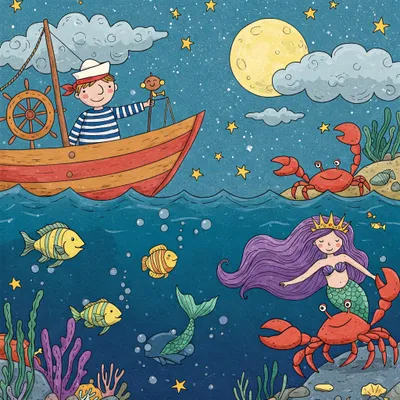A Sailor Went to Sea, Sea, Sea

Lyrics
To see what he could see, see, see
But all that he could see, see, see
Was the bottom of the deep blue, sea, sea, sea.
A sailor went to knee, knee, knee,
To see what he could knee, knee, knee
But all that he could knee, knee, knee
Was the bottom of the deep blue knee, knee, knee.
A sailor went to toe, toe, toe,
To see what he could toe, toe, toe
But all that he could toe, toe, toe
Was the bottom of the deep blue toe, toe, toe.
A sailor went to sea, knee, toe,
To see what he could see, knee, toe
But all that he could see, knee, toe
Was the bottom of the deep blue, see, knee, toe.
Actions
Clapping actions throughout: either 'click, clap, click, clap' if alone or clap together, clap alone, clap together, alone if in pairs.Where the words are sea/see – you can replace a clap by holding your hands near your eyes. Then for or 'knee', tap your knees three times and so on.
History and Meaning
This one's really a simple action song, likely popping up sometime in the 20th century. It's often paired with a hand-clapping game where you mimic the actions – pointing to yourself ("I"), tapping your knee ("knee"), and making wave motions ("sea").
The meaning is pretty straightforward: it's about comparing what a sailor sees out on the vast ocean ("all that he could see, see, see, was the bottom of the deep blue sea, sea, sea") with what someone might see on land or by looking down ("all that I can see, see, see, is the bottom of my dirty knee, knee, knee" - though sometimes 'dirty' is left out!). It plays on the similar sounds of "sea" and "see" and the slightly silly contrast between the sailor's view and the singer's view. It’s more about the rhythm, repetition, and actions than any deep hidden message.